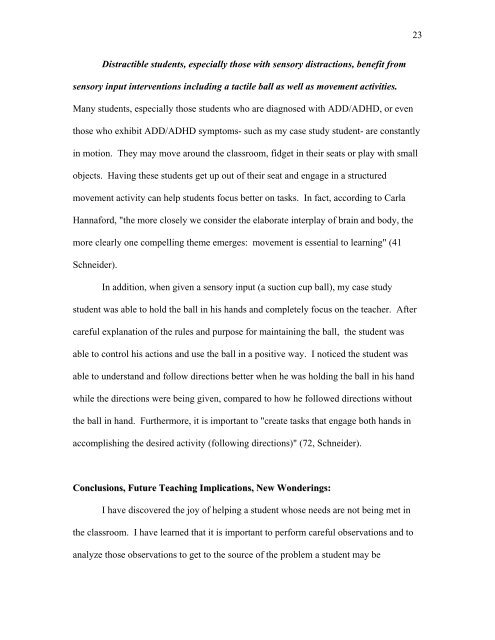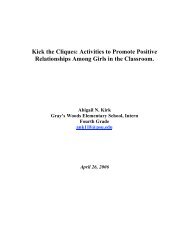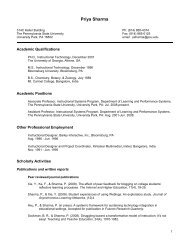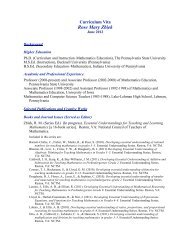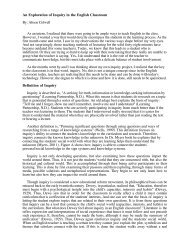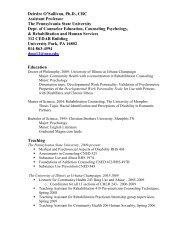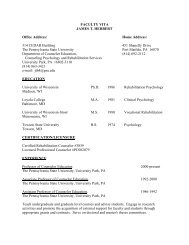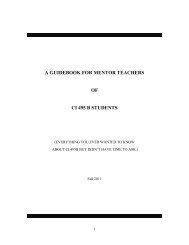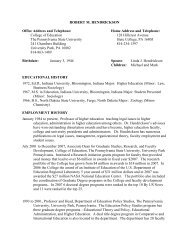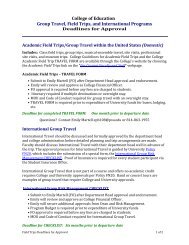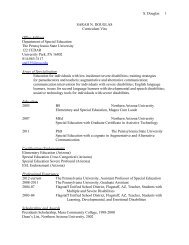Lets Focus! - the Penn State College of Education
Lets Focus! - the Penn State College of Education
Lets Focus! - the Penn State College of Education
Create successful ePaper yourself
Turn your PDF publications into a flip-book with our unique Google optimized e-Paper software.
Distractible students, especially those with sensory distractions, benefit from<br />
sensory input interventions including a tactile ball as well as movement activities.<br />
Many students, especially those students who are diagnosed with ADD/ADHD, or even<br />
those who exhibit ADD/ADHD symptoms- such as my case study student- are constantly<br />
in motion. They may move around <strong>the</strong> classroom, fidget in <strong>the</strong>ir seats or play with small<br />
objects. Having <strong>the</strong>se students get up out <strong>of</strong> <strong>the</strong>ir seat and engage in a structured<br />
movement activity can help students focus better on tasks. In fact, according to Carla<br />
Hannaford, "<strong>the</strong> more closely we consider <strong>the</strong> elaborate interplay <strong>of</strong> brain and body, <strong>the</strong><br />
more clearly one compelling <strong>the</strong>me emerges: movement is essential to learning" (41<br />
Schneider).<br />
In addition, when given a sensory input (a suction cup ball), my case study<br />
student was able to hold <strong>the</strong> ball in his hands and completely focus on <strong>the</strong> teacher. After<br />
careful explanation <strong>of</strong> <strong>the</strong> rules and purpose for maintaining <strong>the</strong> ball, <strong>the</strong> student was<br />
able to control his actions and use <strong>the</strong> ball in a positive way. I noticed <strong>the</strong> student was<br />
able to understand and follow directions better when he was holding <strong>the</strong> ball in his hand<br />
while <strong>the</strong> directions were being given, compared to how he followed directions without<br />
<strong>the</strong> ball in hand. Fur<strong>the</strong>rmore, it is important to "create tasks that engage both hands in<br />
accomplishing <strong>the</strong> desired activity (following directions)" (72, Schneider).<br />
Conclusions, Future Teaching Implications, New Wonderings:<br />
I have discovered <strong>the</strong> joy <strong>of</strong> helping a student whose needs are not being met in<br />
<strong>the</strong> classroom. I have learned that it is important to perform careful observations and to<br />
analyze those observations to get to <strong>the</strong> source <strong>of</strong> <strong>the</strong> problem a student may be<br />
23


